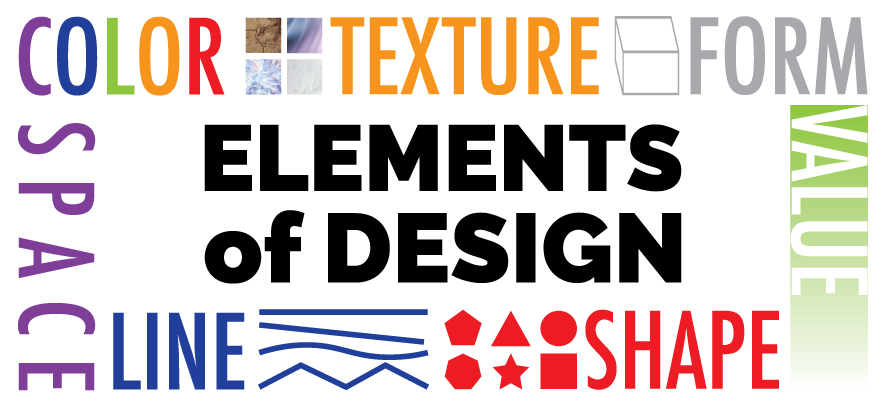The Elements of Design

As a designer, it is essential to understand the elements of design. When designing, these seven elements of design: line, shape, texture, space, form, value, and color are the fundamental building blocks that every designer must know and understand. These elements come into play in every design. They all work together to make designs unique and interesting.

Line
Lines are an essential element of design. They come in all shapes, sizes, and colors and can be straight or curved, dashed or solid. Lines create divisions and hierarchy. They help direct the user’s eye towards specific information or focal point. Line is the most simple element of design but understanding when and where to use it is essential to making great designs

Shape
The next most simple element of design is shape. A shape is a two-dimensional object that stands out from the space next to it because of a defined or implied boundary. Shapes can be geometric, organic, or abstract. Geometric shapes have structure and are often mathematical and precise. Some examples are squares, circles, and triangles. Organic shapes lack well-defined edges and often feel natural and smooth. Abstract shapes are minimalist representations of reality, such as stick figures representing people.

Texture
Texture is the surface feel or the way it’s perceived to feel. The goal of texture is to add depth to a 2D surface. Texture can be applied graphically through patterns. There are two types of texture, tactile and visual. Tactile textures are three-dimensional and can be touched. Texture can attract or detract from a viewer’s eyes and is applied to line shapes and forms.

Space
Every shape or form has a place in space. Space is the area around, below, above, or behind an object and can be positive or negative. Positive space refers to the subject or areas of interest. While negative or white space refers to the background area surrounding the subject or areas of interest. Space can enhance readability, simplify designs and complete an image.

Form
Form pertains to the way that a shape or physical configuration occupies space. Designers can create the appearance of form on a flat surface by using light, shadow, and texture. Like the element of shape, the form can be geometric, organic, or abstract. Everything has form in some way or another. Form can be a two- or three dimensional object that stands out from the space next to it because of a defined or implied boundary.

Value
Value is the relative lightness or darkness of the central compositional elements in a design. The lightest value is white, while the lowest is black. The element of value defines the spatial relationship between elements. Colors can be tinted by adding white or shaded by adding black. Every color can value by that, which can help create emphasis and hierarchy.

Color
Finally, the element of color is likely the most complex element of design. It can stand alone or act as a background. It can highlight other elements too. The element of color is an excellent tool for establishing a mood for the designs. There are multiple characteristics of color: hue, shade, tint, tone, and saturation.
All these elements are essential to understand how to make excellent designs. Applying these seven elements to designs is a great way to establish a reusable branding system that can be used across multiple designs. All of these elements work with the basic principles of design to visually communicate messages to viewers. If you would like to Discover more about Graphic Design, Visit Adobe.
